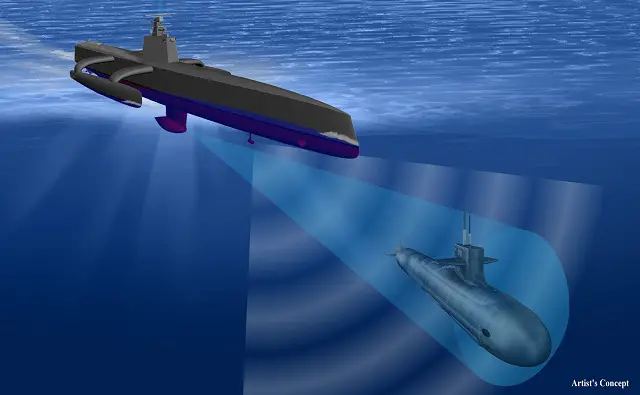"MS3
builds on a legacy of sonar expertise, integrating a host of capabilities
in a single sonar system," said Paul Ferraro, vice president of Advanced
Technology for Raytheon's Integrated Defense Systems business. "MS3
will provide DARPA with exceptional performance – from detection
to tracking – from an unmanned platform." DARPA’s Anti-Submarine Warfare (ASW) Continuous Trail Unmanned Vessel (ACTUV) program seeks to develop a new type of unmanned surface vessel that could independently track adversaries’ ultra-quiet diesel-electric submarines over thousands of miles. One of the challenges that the ACTUV program is addressing is development of autonomous behaviors for complying with the International Regulations for Preventing Collisions at Sea, known as COLREGS. Substantial progress has been made in developing and implementing those behaviors. Currently, ACTUV’s system for sensing other vessels is based on radar, which provides a “90 percent solution” for detecting other ships. However, radar is less suitable for classification of the type of other vessels, for example determining whether the vessel is a powered vessel or a sailboat. Additionally, one of the requirements of COLREGS is to maintain “a proper lookout by sight and hearing.” |
|||
Raytheon delivers sonar for DARPA's unmanned anti-submarine warfare vehicle program
- Posted On




